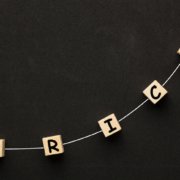Senior Living Sales Strategies: Selling Memory Care
There is a reason that a family member decided to pick up the phone when they did and call you. Finding out the reason is key in selling memory care. Here are the six senior living sales strategies to remember when selling memory care:
1. Listen, Listen, Listen, and then Listen Some More.
- Allow the family time to vent and explain their frustrations.
- Make sure to give them an opportunity to ask questions.
- Ask open-ended discovery questions. This will give you more information regarding their situation and concerns.
- Learn about the potential resident and stress points. Why did they pick up the phone and call you?
2. Selling Memory Care – Educate and Inform.
- The more they understand, the more control families have over the decision making process.
- Don’t overwhelm families with too much information.
- Use different resources. Some people learn more from books and pamphlets, others from videos or lectures.
- Build a resource library with plenty of helpful guides, blog posts, and other premium content.
- Offer support groups and educational programs.
3. Senior Living Sales Strategies: Help Solve Their Problems.
- Reduce stress during the decision making process – providing the right amount of support.
- Offer respite services.
- Know your Community Resources:
- Alzheimer’s Association
- Elder Law Attorneys
- Counseling Professionals
- Geriatric Medicine Professionals
4. Listen…Yes Again! Mark Twain once said, “You have two ears and one mouth, so you should listen twice as much as you say.”
- Listen to what is being said as well as what is left unsaid.
- Don’t jump to fill pauses in the conversation.
5. Remember it’s an Emotional Process.
- Families may not always be rational. Provide patience and don’t judge.
- The decision to call you is often filled with guilt. Guilt can be the main hurdle to overcome.
6. It’s All About the People.
- Physical Environment is important – but it’s all about who is going to be taking care of mom.
- Engage with residents and associates on tour.
Things to keep in mind during the tour and move-in process:
- Encourage families to make a decision before a crisis (fall, wandering) occurs.
- Make the decision process less daunting by providing support for the Move-In process.
- Recognize and understand what each family is going through and recognize that each family and each situation is unique.
- You do this every day – for families, the tour and move-in process is often unknown and overwhelming.
Senior Living Sales Strategies Need to Be Aligned with Marketing!
That’s precisely where we can help! Get in touch and let’s discuss your sales and marketing needs.











